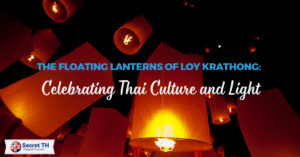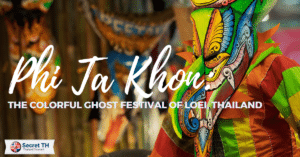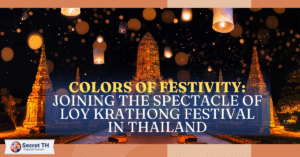Thai artistry is renowned for its exquisite craftsmanship in silk and silver. These traditional crafts have been refined over centuries, showcasing intricate designs and skillful techniques. Thai silk is celebrated for its unique textures and vibrant hues, while Thai silverwork exhibits exceptional detail and elegance.
In this blog post, we delve deep into the world of Thai Silk and Silver, exploring their origins, the painstaking processes involved in their creation, and their significance in Thai culture. We aim to provide a concise yet comprehensive understanding of these traditional crafts, shedding light on their unparalleled artistry.
Thai Silk: A Tapestry of Elegance and Tradition
Thai silk has long been synonymous with luxury, elegance, and traditional craftsmanship. Woven from the fibers of the Thai silkworm, this fabric has been prized for centuries for its shimmering, iridescent quality and intricate patterns. Each piece of Thai silk tells a story, reflecting the unique culture and history of its country of origin. From the vibrant colors of the tropical landscape to the intricate, handwoven designs, Thai silk is truly a tapestry of elegance and tradition.
Today, this luxurious fabric continues to be celebrated around the world for its beauty, durability, and timeless style. Whether you are looking for a stunning dress, a decorative pillow, or a piece of wall art, Thai silk is the perfect choice for those who appreciate the artistry and quality of traditional textiles.
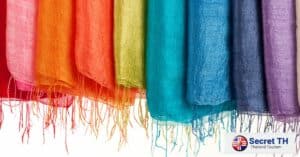
Historical Significance
Thai silk is not just a luxurious type of fabric but also a tapestry of elegance and tradition that has been woven into the fabric of Thai culture for centuries. Its production dates back to the ancient Silk Road, where it was an important trade commodity that enriched the lives of those who produced and traded it. The intricate designs and vibrant colors reflect the rich cultural heritage of Thailand and are a testament to the ingenuity and creativity of the Thai people. The historical significance of Thai silk cannot be overstated, as it has played a crucial role in the country’s economic development and cultural identity. Today, Thai silk continues to be celebrated around the world for its beauty, elegance, and timeless appeal.
Production Process
The production process of Thai silk is a rich tapestry of elegance and tradition. From the cultivation of the silkworms to the final weaving of the fabric, every step is a meticulous and intricate process that has been passed down through generations. Thai silk is known for its luxurious texture, vibrant colors, and intricate designs that reflect the distinct culture and heritage of Thailand. The production process involves the utmost attention to detail, with skilled artisans using traditional techniques and tools to weave the silk into intricate patterns that have become synonymous with Thai silk.
Raising Silkworms
The first step in the production process of Thai Silk involves raising silkworms. Silkworms are carefully cultivated in controlled environments, where they are provided with a diet of mulberry leaves, which are the primary food source for silkworms. The silkworms are nurtured and monitored to ensure optimal growth and health. During this stage, the silkworms spin cocoons made of fine silk threads.

Harvesting Silk Cocoons
Once the silkworms have completed spinning their cocoons, the next step is to harvest the silk cocoons. The cocoons are carefully collected by hand, ensuring minimal damage to the delicate silk fibers. Skilled workers gently separate the cocoons from any leftover silk threads. This process requires precision and patience to preserve the quality of the silk. The harvested cocoons are then sorted based on their size and quality.
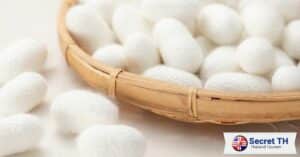
Silk Reeling and Weaving
After the cocoons have been harvested, the silk reeling process begins. The cocoons are immersed in hot water to soften the sericin, a natural gum that holds the cocoon together. Skilled workers then extract the silk fibers from the softened cocoons by carefully unwinding the threads. Multiple silk threads are combined to form a single, stronger thread. This thread is then wound onto reels, creating a continuous silk thread. Once the reeling process is complete, the silk thread is ready for weaving. Artisans use traditional handlooms or modern weaving machines to transform the silk thread into exquisite Thai Silk fabric, incorporating intricate patterns and designs. The woven fabric is then inspected for quality and undergoes finishing processes such as washing, dyeing, and ironing before it is ready for use in various products.

Versatility and Applications
Thai silk is used to craft a wide range of products, encompassing both traditional and contemporary designs. Traditional clothing such as the “pha sin” and “pha kiao” continue to be popular, showcasing the elegance and grace of Thai silk. Additionally, Thai silk is employed in the creation of home furnishings, accessories like scarves and ties, as well as decorative items like cushion covers and wall hangings. Its versatility allows it to shine in various contexts.

The Gleaming Artistry of Thai Silverwork
In the realm of traditional crafts, Thai silverwork stands as a shining example of exceptional artistry and craftsmanship. With a rich history dating back centuries, this revered craft showcases the ingenuity and skill of Thai silversmiths. From intricate filigree to mesmerizing engraving, Thai silverwork encompasses a world of beauty and cultural significance. Join us as we delve into the captivating artistry of Thai silverwork and explore its techniques, motifs, and enduring allure.
Time-Honored Tradition
Silverwork in Thailand has a rich heritage that dates back centuries. Thai artisans have perfected the craft, resulting in exquisite silver pieces that are recognized globally. This ancient tradition is deeply intertwined with Thai culture and carries immense cultural significance.
Techniques and Designs
Thai silverwork encompasses a diverse array of techniques, each requiring immense skill and precision. Filigree, one of the most admired techniques, involves shaping fine silver wires into delicate and intricate lace-like patterns. Repoussé, on the other hand, involves hammering and manipulating silver sheets to create raised designs. The use of intricate engraving further enhances the beauty and detail of Thai silver pieces.

Symbolism and Motifs
Traditional Thai silverwork often incorporates motifs inspired by nature, religious symbolism, and local folklore. These motifs hold profound cultural meaning, representing aspects of Thai beliefs and traditions. Flowers, leaves, animals, and mythical creatures are frequently depicted, showcasing the deep connection between Thai silverwork and the country’s cultural heritage.
Artistic Expressions
Thai silversmiths are revered for their exceptional artistry and attention to detail. Their craftsmanship extends beyond jewelry to encompass decorative objects, religious artifacts, and ceremonial items. Each piece is meticulously crafted with precision, reflecting the silversmith’s mastery and dedication to preserving this ancient craft.

Preservation and Appreciation
Both Thai silk and silverwork are integral to Thailand’s cultural heritage. Artisans who dedicate themselves to these crafts play a crucial role in preserving centuries-old traditions, ensuring that the artistry and cultural significance continue to be passed down through generations.
Visitors to Thailand have the opportunity to witness the mastery of Thai silk and silverwork firsthand. Markets, boutiques, and workshops across the country provide immersive experiences where one can appreciate the intricate details and understand the cultural significance behind each creation. These encounters offer a chance to acquire unique pieces as tangible reminders of Thailand’s rich cultural heritage.

Conclusion
Thai silk and silverwork represent the epitome of artistry and craftsmanship in Thailand. Their historical significance, intricate techniques, and cultural symbolism make them invaluable treasures of Thai culture. Thai silk’s delicate weaving and vibrant colors, alongside the meticulous designs and engraving in Thai silverwork. This is to continue to captivate and inspire people worldwide. As these traditional crafts persist and adapt to contemporary tastes, they serve as enduring testaments to the timeless beauty of Thailand’s artistic legacy.


